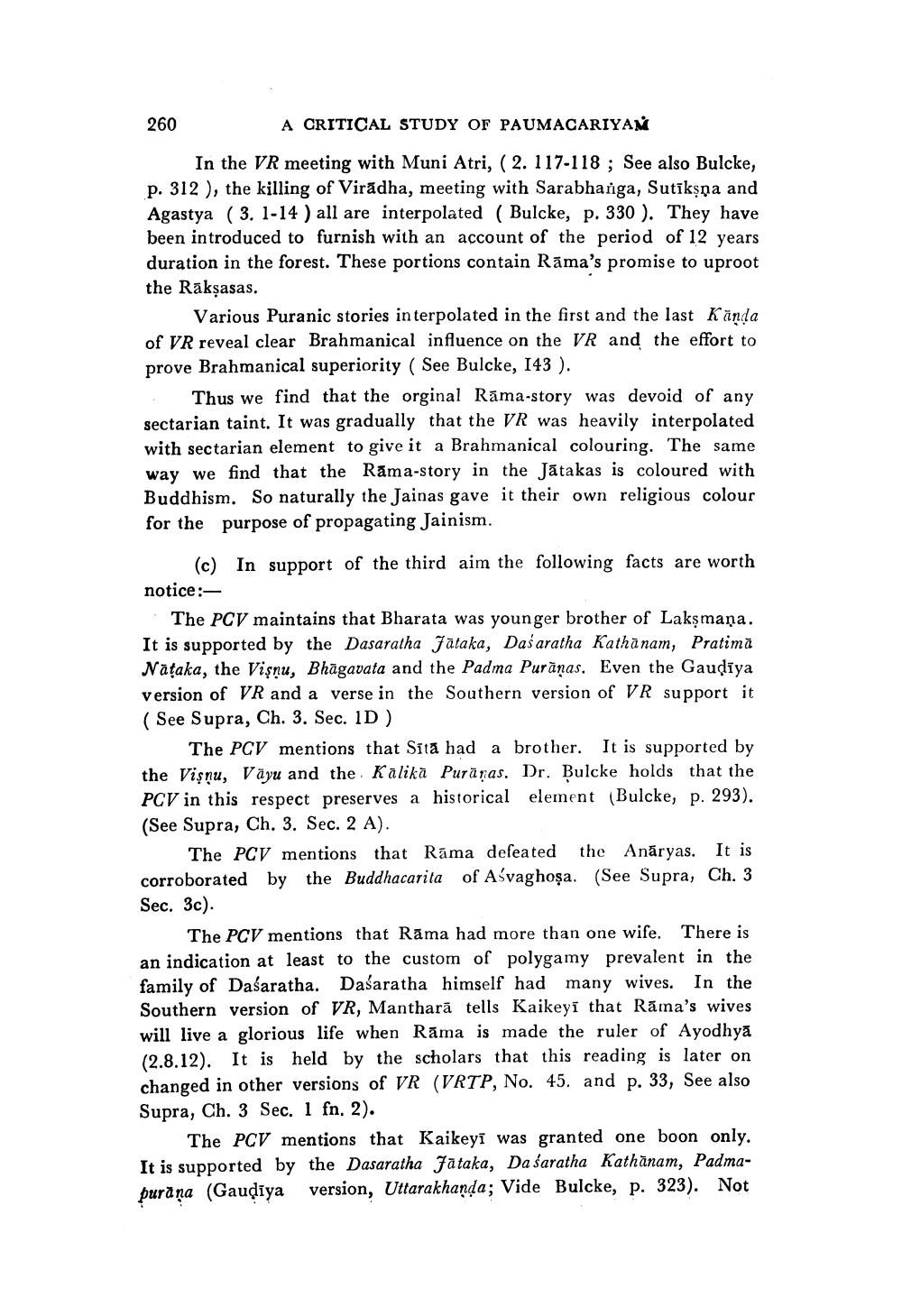________________
260
A CRITICAL STUDY OF PAUMACARIYAN In the VR meeting with Muni Atri, ( 2. 117-118 ; See also Bulcke, p. 312 ), the killing of Virădha, meeting with Sarabhanga, Sutīkşpa and Agastya (3. 1-14 ) all are interpolated ( Bulcke, p. 330 ). They have been introduced to furnish with an account of the period of 12 years duration in the forest. These portions contain Rama's promise to uproot the Raksasas.
Various Puranic stories in terpolated in the first and the last Kända of VR reveal clear Brahmanical influence on the VR and the effort to prove Brahmanical superiority (See Bulcke, 143 ).
Thus we find that the orginal Rāma-story was devoid of any sectarian taint. It was gradually that the VR was heavily interpolated with sectarian element to give it a Brahmanical colouring. The same way we find that the Rāma-story in the Jātakas is coloured with Buddhism. So naturally the Jainas gave it their own religious colour for the purpose of propagating Jainism.
(c) In support of the third aim the following facts are worth notice:
The PCV maintains that Bharata was younger brother of Lakşmaņa. It is supported by the Dasaratha Jātaka, Dasaratha Kathānam, Pratima Nataka, the Vişnu, Bhāgavata and the Padma Puranas. Even the Gaudiya version of VR and a verse in the Southern version of VR support it ( See Supra, Ch. 3. Sec. ID)
The PCV mentions that Sita had a brother. It is supported by the Vişnu, Väyu and the Kalikā Purāsas. Dr. Bulcke holds that the PCV in this respect preserves a historical element (Bulcke, p. 293). (See Supra, Ch. 3. Sec. 2 A).
The PCV mentions that Rāma defeated the Anāryas. It is corroborated by the Buddhacarita of Asvaghoşa. (See Supra, Ch. 3 Sec. 3c).
The PCV mentions that Rāma had more than one wife. There is an indication at least to the custom of polygamy prevalent in the family of Daśaratha. Dasaratha himself had many wives. In the Southern version of VR, Mantharā tells Kaikeys that Rama's wives will live a glorious life when Rāma is made the ruler of Ayodhya (2.8.12). It is held by the scholars that this reading is later on changed in other versions of VR (VRTP, No. 45. and p. 33, See also Supra, Ch. 3 Sec. 1 fn. 2).
The PCV mentions that Kaikeyi was granted one boon only. It is supported by the Dasaratha Jātaka, Da śaratha Kathānam, Padmapurana (Gaudiya version, Uttarakhanda; Vide Bulcke, p. 323). Not




